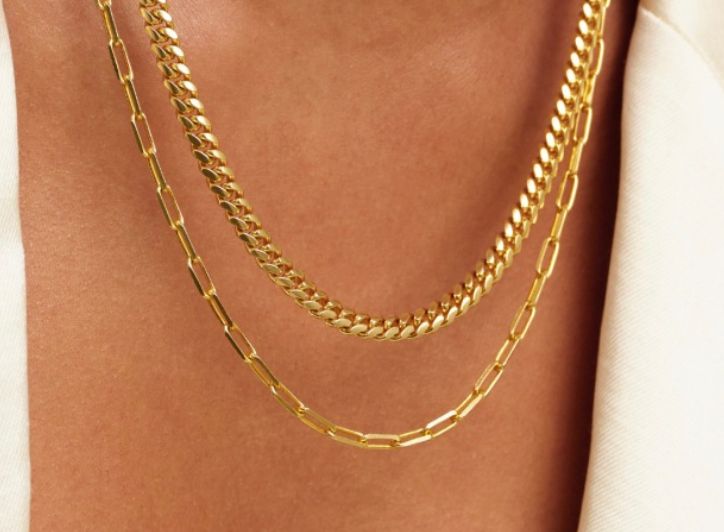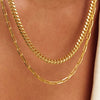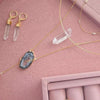All About Chains

A modern trend that never goes out of style
A History Of Chain Necklaces
Necklaces may perhaps be the earliest form of jewelry that humans wore. Chain necklaces aren’t excluded from this history – they too have been worn throughout history by everyone from medieval royalty to modern day rappers.
Here’s everything we know about chain necklaces throughout history, from where they started to what role they play in the current antique jewelry market.
What is a chain necklace?
By definition, a chain is a series of links or rings, usually made from metal, connected or fitted to one another. Chains have been used for a wide variety of purposes, and for millennia we have worn them as jewelry.
Chains are usually said to represent eternal love, and human connection – the eternity of circles without beginning or end, linked to other circles in a fortified way.
The chain as we know it today has been around for an estimated 6000 years. Whilst there are many iterations of chain necklaces, they have barely been altered from those we may have worn in ancient times.
Status symbols
Throughout history, chain necklaces have been worn primarily by royalty and the rich. By 300 BC, the elite upper classes within society were wearing chains that had gemstones embedded in the links. They often wore charms hanging from chain necklaces in order to protect them from evil.
During the Middle Ages, chains were frequently used as emblems of power and authority. Both kings and the clergy wore thick chains made of gold, complete with insignias or badges of office. In the late Gothic era and early Renaissance, chains became a more integral part of dressing even than brooches. It was then that they became a mark widely for social status.
The Renaissance in particular was an era where personal ornamentation was increasingly important, and Leonardo Da Vinci improved on the common chain design.
For the upper classes, lavish pendants, often illustrating biblical scenes or emblems, were normally hung on hefty gold chain necklaces. Throughout the ages both men and women wore chain necklaces, but men tended to wear larger ones in order to display their status.
Henry VIII is often depicted wearing a thick chain; he presented heavy gold chains as signs of favor, but kept the best for himself. In this time also, men in Germany and Flanders were fashionably draped in gold links, some as bulky as bicycle chains.
As the centuries passed, chain necklaces became as crucial to the well-dressed woman as they were to their male counterparts. These chains were considerably different; now longer, thinner, and more delicate. Women would have often worn gemstone pendants suspended from such chains.
Who started the trend of wearing chains?
The Modern Chains
In the 1930s, Coco Chanel brought the chain necklace to the mainstream, when she began to appear draped to the waist in gilt chains and fake pearls. This was a look accessible and affordable to everyone, including the working class who were most drastically hit by the Depression.
Throughout the war, the real gold chain shrank and then expanded, with jewelers choosing to create chain necklaces that resembled tank treads, gas pipe links, and bricks.
As the 20th century progressed, long gold chains came back into fashion. However, in the simplistic boho style of the 1970s, they weren’t piled on Chanel-style. Instead, they were both chunky and sleek, and worn by both men and women. This Victorian era chain necklace was crafted much earlier, but accurately depicts the simplistic yet statement style of the time.
Male rappers in particular began to wear oversized gold chains throughout the 80s and 90s, a tradition which still stands today. Nowadays, you can find variations on all kinds of chain necklaces; draped chains like Coco Chanel’s, bulky industrial chokers – all of which are reinventions of reinventions.
The chain necklace is now such a classic component of jewelry that there are innumerable ways to weave and wear them. They appear never to get old.
Nina Cavalcante



